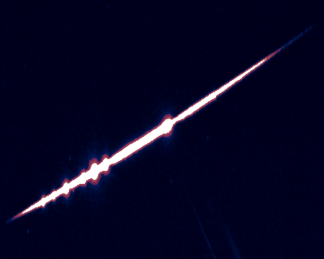A DAZZLING fireball, produced by a rock detached from an asteroid, has streaked across the sky of southern Spain.
The spectacular fireball, with a luminosity equivalent to a full moon, could be seen from more than 600 kilometres away and was captured by the SMART project detectors from the astronomical observatories of Calar Alto (Almeria), Sierra Nevada (Granada), La Sagra, La Hita and Sevilla, as well as from the detection station operated by Dr. Jaime Izquierdo in Madrid (Complutense University).
The phenomenon was especially spectacular in the skies of Sevilla, Huelva, Cordoba and Extremadura.
The rock entered the atmosphere at around 10.25pm at a speed of 76,000 kilometres per hour.
The high-speed collision with the atmosphere caused the rock to become incandescent generating a white-hot meteorite that began at an altitude of some 91 kilometres above the south of the province of Badajoz, and from there it advanced in a north-westerly direction.
Throughout its trajectory there were several explosions, due to abrupt ruptures of the rock, which caused momentary increases in its luminosity.
Preliminary analysis of the event indicates that the rock was not completely destroyed in the atmosphere, but that a small part of it survived, falling to the ground in the form of a meteorite, according to astrophysics expert, Jose Maria Madiedo, on his Twitter account.
The detectors of the SMART project operate within the scope of the Meteorological and Earth Observation Network of Southwest Europe (SWEMN), which aims to continuously monitor the sky, in order to record and study the impact on the terrestrial atmosphere of rocks from different objects in the Solar System.
READ MORE:
- WATCH: Two bright fireballs soar over Spain’s Andalucia and Castilla-La Mancha
- WATCH: Stunning fireball soaring 96,000 km/hr over Spain’s Andalucia
Click here to read more News from The Olive Press.









